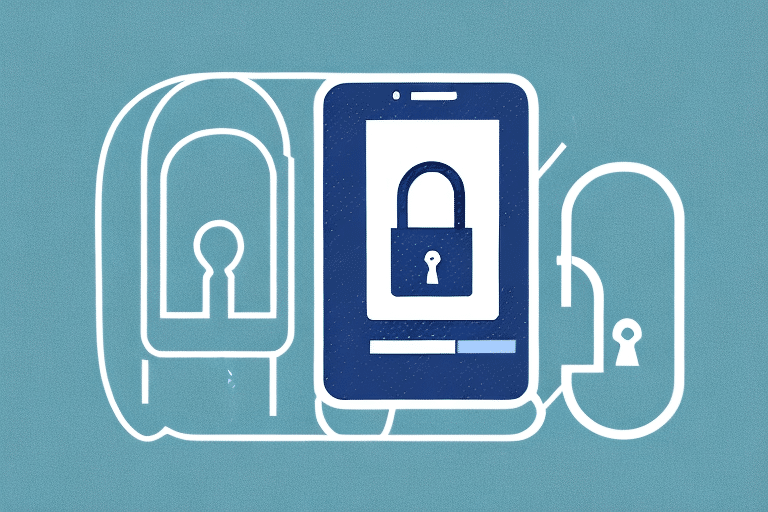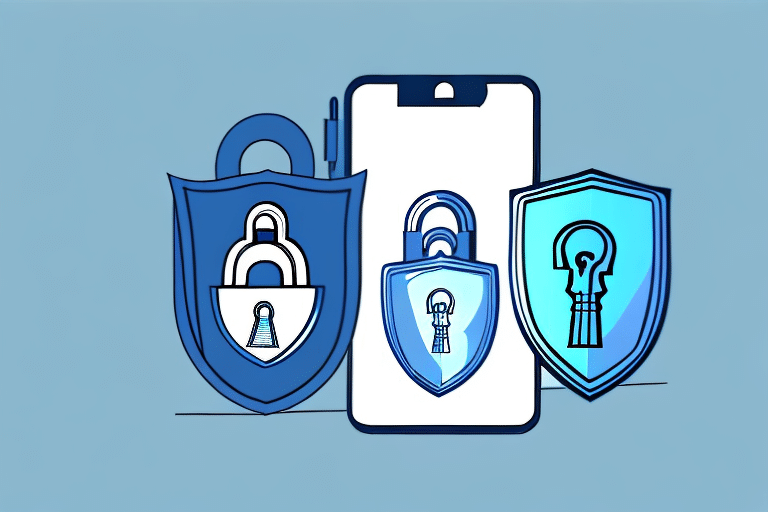In today’s digital age, mobile devices have become an integral part of our everyday lives. We use them to communicate, access information, and even conduct business transactions.
However, as convenient as they may be, mobile devices come with many inherent security risks that can compromise the safety of sensitive business data.
This is why mobile security is more critical than ever, and businesses must ensure that they have robust security measures in place to protect their sensitive information.
On This Page:
Most Common Cyber Threats for Mobile Devices
Mobile devices face a variety of cyber threats, each presenting unique risks:
- Phishing: This involves tricking users into revealing sensitive information through fake sites or deceptive emails.
- Malware: Malicious software installed unknowingly by users, potentially leading to data compromise or device damage.
- Man-in-the-middle attacks: These occur when hackers intercept data during transmission between the user and the network.
- Jailbreaking or Rooting: Removing device operating system limitations allows for unauthorized software use, opening the door to potential security compromises.
- Smishing: A form of phishing that involves sending deceptive text messages intended to trick users into revealing sensitive information, such as passwords or credit card details.
- Juice Jacking: This cyber attack involves malware installed on public charging ports. When unsuspecting users connect their devices, the malware infects them, enabling hackers to steal data or harm the device.
Understanding the Risks of Unsecured Mobile Devices

The first step to securing your business mobile devices is to understand the risks involved with unsecured devices. Unsecured devices can lead to data breaches, exposing sensitive company and customer data, which can result in reputation damage, regulatory fines, and financial losses.
One of the most significant risks is the use of unsecured public Wi-Fi networks, which can be easily intercepted by hackers. When employees connect to public Wi-Fi networks, they are putting their devices and the company’s data at risk. Hackers can easily intercept the data being transmitted, including login credentials, credit card information, and other sensitive data. To mitigate this risk, employees should always use a virtual private network (VPN) when connecting to public Wi-Fi networks.
Another risk associated with unsecured mobile devices is malware and viruses. Malware and viruses can infect devices through various means, including downloading malicious apps, clicking on suspicious links, or opening infected attachments. Once a device is infected, the malware can steal data, spy on the user, or even take control of the device. To prevent malware and virus infections, employees should only download apps from trusted sources, avoid clicking on suspicious links, and keep their devices updated with the latest security patches.
Advise employees to use their personal chargers or power banks, and avoid public charging stations. If they must use a public charging station, they should use a USB data blocker, also known as a ‘USB condom,’ which allows the device to draw power to charge but blocks data transfer capabilities, preventing potential malware infection due to juice jacking.
Phishing attacks are another risk that businesses need to be aware of. Phishing and smishing attacks involve tricking users into providing sensitive information, such as login credentials or credit card information. These attacks can be carried out through email, text messages, or social media. To prevent phishing attacks, employees should be trained to recognize the signs of a phishing attack and should never provide sensitive information unless they are certain that the request is legitimate.
Encourage employees to be suspicious of unsolicited messages, even if they appear to be from a known contact or organization. They should avoid clicking on links in these messages and never provide personal information in response to a text message. Instead, they should independently look up the contact information for the entity supposedly contacting them and confirm the request.
Physical theft or loss of mobile devices can also lead to data breaches. If a device is lost or stolen, the data stored on it can be accessed by anyone who finds it. To prevent this, employees should always keep their devices with them or store them in a secure location when not in use. Additionally, devices should be equipped with remote wiping capabilities, which allow the data to be erased if the device is lost or stolen.
Jailbreaking or rooting mobile devices can also pose a risk. Jailbreaking or rooting involves removing the restrictions placed on the device by the manufacturer, which can allow users to install unauthorized apps or access restricted features. However, this also makes the device more vulnerable to malware and viruses. To prevent this risk, employees should never jailbreak or root their devices.
Finally, social engineering attacks are a risk that businesses need to be aware of. Social engineering attacks involve tricking users into divulging sensitive information or performing actions that are not in their best interest. These attacks can be carried out through various means, including phone calls, emails, or even in-person interactions. To prevent social engineering attacks, employees should be trained to recognize the signs of these attacks and should never provide sensitive information or perform actions unless they are certain that the request is legitimate.
5 Mobile Security Best Practices for Businesses
The following practices can help enhance the security of your mobile devices:
- Device Encryption: Encrypting your device ensures that your data is safe, even if your device is lost or stolen.
- Password Protection: A strong password provides an additional layer of security and ensures that only authorized individuals have access to sensitive data.
- App Permissions: Restrict app permissions only to those that need them, such as location or microphone access.
- Regular Updates: Ensure your devices are always updated to the latest firmware and security patches.
- Backup: Maintain regular backups to avoid data loss during device theft or loss.
While the above practices are essential for securing business mobile devices, implementing policies that protect them is equally important.
Here are some additional details on how to secure your mobile devices:
1. Create a Mobile Device Policy
Create a mobile device policy that outlines the acceptable use of mobile devices and the security measures that employees must follow. This policy should include guidelines for password protection, app downloads, and device encryption. Make sure that all employees are aware of the policy and understand the consequences of violating it.
2. Use Mobile Device Management Software
Mobile device management (MDM) software allows you to manage and secure mobile devices from a central location. With MDM software, you can enforce security policies, remotely wipe devices, and monitor device usage. Make sure that you choose an MDM solution that meets your organization’s needs and provides the level of security you require.
3. Train Employees on Mobile Security
Employee training is critical to the success of any mobile device security strategy. Make sure that all employees receive training on how to use mobile devices securely. This training should cover topics such as password protection, app permissions, and how to identify and report security threats.
4. Implement Two-Factor Authentication
Two-factor authentication provides an additional layer of security by requiring users to provide two forms of identification before accessing sensitive data. This can include a password and a fingerprint scan, for example. Implementing two-factor authentication can significantly reduce the risk of unauthorized access to your organization’s data.
5. Monitor Mobile Device Usage
Regularly monitor mobile device usage to identify any security threats or policy violations. This can include reviewing app permissions, monitoring data usage, and tracking device location. By monitoring mobile device usage, you can quickly identify and address any security issues before they become a more significant problem.
By implementing the practices and policies outlined above, you can help ensure the security of your business’s mobile devices and protect your organization’s sensitive data.
Implementing Mobile Device Security Policies

Mobile devices have become an essential part of our lives, and they are used for work as well as personal purposes. However, with the widespread use of mobile devices, the risks associated with them have also increased.
Therefore, it is important for businesses to create a security policy for mobile devices to ensure the safety of their confidential data and information.
A comprehensive mobile security policy helps businesses establish expectations and guidelines for their employees, which reduces the risk of security incidents.
Here are some key areas to cover in your mobile security policy:
- Use Mobile Device Management (MDM) Software: Utilize an MDM solution that meets your organization’s needs. This software can enforce security policies, monitor device usage, remotely wipe devices, and maintain up-to-date security patches.
- Network Access: Specify whether employees can access internal resources from external networks and how they should do so. Ensure that all network connections are secure and that employees use a virtual private network (VPN) when accessing sensitive data from external networks.
- Password requirements: Define password requirements, such as length, complexity, and the timeframe for changing passwords. Encourage employees to use strong passwords and two-factor authentication to add an extra layer of security.
- Reporting Incidents: Establish procedures for reporting lost devices and breaches. Employees should be trained to report any lost or stolen devices immediately to the IT department. In case of a security breach, employees should know whom to contact and how to report the incident.
- Employee Education: Educate your employees on security best practices, such as recognizing the risks of public Wi-Fi, understanding social engineering attacks, and maintaining their devices with approved applications and up-to-date security software.
- Bring Your Own Device (BYOD) Policy: If your company allows employees to use their own personal devices for work purposes, it’s important to establish a comprehensive Bring Your Own Device (BYOD) policy. This should clearly outline which types of devices are permitted, what levels of access these devices will have to company data, and what security measures are required on these devices (such as up-to-date antivirus software, regular system updates, and encryption). You should also clarify the actions to be taken if a personal device that has access to company data is lost or stolen.
By implementing a mobile device security policy, businesses can ensure that their confidential data and information remain safe and secure. It is important to review and update the policy regularly to keep up with the latest security threats and trends.
How to Educate Employees on Mobile Device Security

Mobile technology has become an integral part of our lives, both at work and at home. With the rise of mobile devices in the workplace, it is essential to educate employees on mobile device security.
Employee education is crucial to ensure that everyone in an organization understands the importance of mobile device security and follows the best practices to keep their devices and company data safe. Here are some ways to educate employees on mobile device security:
Training Sessions
Regularly host in-person or online sessions that cover important topics like password management, data encryption, identifying security threats, and safe browsing habits.
Security Awareness Campaigns
Use campaigns, posters, and newsletters to consistently remind employees about the importance of security and to provide helpful tips.
Policy Training
Ensure all employees are familiar with your mobile device security policies and the consequences of violations.
Testing
Simulate attacks to assess and improve security practices. Use the results to identify vulnerabilities and provide additional training if needed.
Personal Device Use
Training should cover the use of personal devices for work purposes, explaining the additional security risks and responsibilities involved with such use.
Incident Reporting
Employees should know how to report a security incident. Whether it’s a lost device, suspicious activity, or a suspected cyber attack, quick reporting can mitigate damage.
Emerging Trends and Threats in Mobile Device Security
With technological advancements, new trends are emerging in the mobile security landscape:
- Biometric Authentication: Fingerprints, facial recognition, and other biometric identifiers are becoming more common as authentication methods, providing a higher level of security than traditional passwords.
- Artificial Intelligence (AI): AI is being used to detect unusual behavior and potential threats on mobile devices more effectively. It learns from previous security incidents and adapts to new trends and strategies used by cybercriminals.
- Blockchain Technology: Blockchain can be used to ensure data integrity and security. Its decentralized nature makes it difficult for potential hackers to alter or steal information.
However, new technologies also bring new threats:
- AI-Powered Cyberattacks: Just as businesses use AI to improve security, cybercriminals are also using AI to perform sophisticated attacks that can learn from and adapt to security measures.
- Sophisticated Malware: As devices become more secure, the malware designed to infiltrate them also becomes more advanced. This includes mobile ransomware, spyware, and trojans that can bypass security systems and disguise themselves as legitimate apps or files.
- IoT Vulnerabilities: As more businesses incorporate Internet of Things (IoT) devices into their operations, these devices can become potential entry points for cybercriminals. Ensuring that these devices are secure is a critical part of mobile device security.
Staying up-to-date with the latest trends and threats in mobile security is essential to keeping your business’s data safe. Regular training and ongoing education can help your team remain vigilant and adaptable in the face of evolving cybersecurity risks.
Conclusion
Securing mobile devices is essential for businesses to protect sensitive company and customer data. By implementing best practices, policies, and security solutions, and educating employees, businesses can reduce the risk of cyber threats.
Regularly reviewing mobile device security measures is vital to ensuring that they are up to date and continue to protect confidential data.



